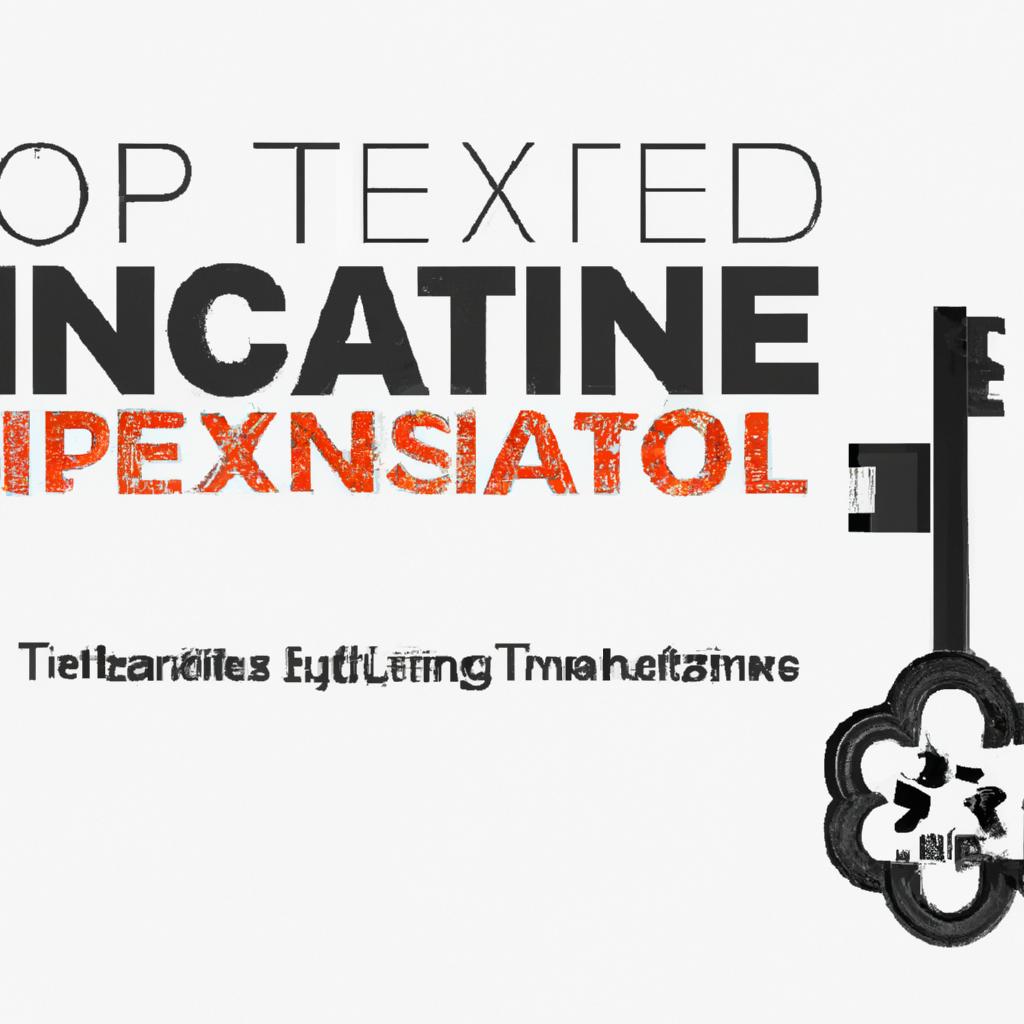In a world where opportunities often appear constrained by geography, the potential for growth and innovation lies in the heart of underserved communities. As businesses seek to expand their workforce, they may overlook a rich reservoir of talent just waiting to be tapped into. This article explores the transformative power of tax incentives designed to encourage hiring from these overlooked areas. By unlocking the potential of diverse perspectives and experiences, companies not only enrich their own work environments but also play a pivotal role in revitalizing local economies. Join us as we delve into the nuances of these incentives, revealing how they can create a win-win scenario for employers and communities alike.
Exploring the Landscape of Tax Incentives for Job Creation
As businesses strive for growth and community engagement, tax incentives designed to stimulate job creation from underserved areas offer a powerful way to align economic objectives with social responsibility. These incentives come in various forms, attracting organizations to invest in regions with high unemployment rates and limited access to resources. Here are some key features often associated with such tax incentives:
- Wage Subsidies: Businesses can receive partial reimbursements on employee wages, effectively lowering overall labor costs.
- Tax Credits: Employers may qualify for credits against state and federal taxes for each eligible worker hired from targeted demographics.
- Deductions for Training Expenses: Companies investing in skill development for new employees can deduct these costs from their taxable income.
Moreover, the impact of these incentives can be amplified through collaborative initiatives between local governments and private sectors. By setting up local partnerships, businesses can help shape workforce development programs tailored to the community’s specific needs. The following table summarizes the common goals and benefits of such collaborations:
| Goals | Benefits |
|---|---|
| Increase Job Opportunities | Reduces unemployment while fostering economic stability. |
| Enhance Skill Development | Creates a workforce equipped with necessary skills for local industries. |
| Attract Investment | Boosts local economies and increases tax revenues. |

Understanding the Economic Impact on Underserved Communities
Underserved communities often experience a cycle of economic disadvantage, exacerbated by limited access to education, healthcare, and employment opportunities. This economic disparity not only affects individual families but also stifles overall community growth. When addressing these challenges, it is essential to recognize the role that businesses can play in uplifting these areas through job creation and investment. Tax incentives serve as a catalyst for encouraging organizations to explore hiring talent from these communities, potentially leading to enhanced skills development, increased local consumption, and an overall boost in economic vitality.
By implementing targeted tax incentives, we can foster an environment where companies are motivated to invest in the potential of underserved individuals. These incentives may include wage subsidies, training grants, and investment credits that align with business goals while benefiting communities. The long-term impact could be transformative, as companies develop a more diverse workforce and tap into a broader market. Furthermore, it is crucial for businesses to engage with community leaders to ensure that their hiring practices not only fulfill corporate social responsibilities but also foster authentic partnerships that contribute to sustained economic growth.

Strategies for Businesses to Maximize Tax Benefits
To fully leverage tax incentives aimed at promoting hiring from underserved areas, businesses should employ a multifaceted approach. First, stay informed about local and federal programs that provide credits or deductions for employing individuals from disadvantaged backgrounds. Regularly consulting with a tax professional can help in identifying newly introduced incentives and understanding the eligibility criteria. Secondly, develop partnerships with local workforce organizations, educational institutions, and community groups. These collaborations can streamline the recruitment process and ensure that businesses have access to a diverse and capable talent pool.
Additionally, businesses can benefit from training and development programs tailored for new hires from these areas. By investing in their growth, companies not only enhance productivity but also qualify for certain tax credits related to employee training initiatives. Moreover, consider establishing a tracking system that documents how hiring from underserved areas positively impacts company culture and productivity, thereby creating a compelling business case that can be leveraged for additional funding or support. Following this strategic framework will help to uncover significant tax benefits while fostering economic growth within the community.

Building Sustainable Connections with Local Talent Pools
Cultivating a vibrant workforce begins with recognizing and engaging local talent pools, especially in underserved areas where skills and passion await discovery. By tapping into these communities, businesses can create a mutually beneficial relationship that promotes social equity while enhancing their own operational capabilities. Investing time and resources to forge connections with local educational institutions, workforce training programs, and community organizations can yield significant dividends. Some effective strategies to consider include:
- Collaborating with Vocational Schools: Partner with local technical colleges to develop training programs tailored to your industry needs.
- Hosting Job Fairs: Organize events specifically targeting local talent, creating opportunities for direct engagement.
- Mentorship Programs: Pair experienced employees with individuals from underserved communities to foster skill development and confidence.
By nurturing these connections, companies can not only enhance diversity within their workforce but also address skills gaps that often hinder growth. Moreover, the integration of local talent into a company’s fabric can lead to a more committed and engaged workforce, as employees feel a stronger connection to their community. It’s essential to create an environment where employees value their contribution and see their roles as integral to both the company’s success and their community’s well-being. Below is a summary of potential benefits for businesses willing to invest in local talent pools:
| Benefit | Description |
|---|---|
| Enhanced Community Reputation | Businesses are viewed positively as contributors to local development. |
| Diverse Perspectives | A richer array of ideas fosters innovation and creativity. |
| Lower Turnover Rates | Locally sourced talent tends to have a stronger commitment to the organization. |
Future Outlook
As we stand at the crossroads of opportunity and equity, embracing tax incentives designed to empower businesses and uplift underserved communities is more than just a strategic move—it’s a call to action. By harnessing the potential of these initiatives, we not only bolster our workforce but also cultivate a more inclusive economy where talent knows no geographical bounds.
It’s time to rethink traditional hiring practices and consider the wealth of skills and perspectives that lie within marginalized areas. The choice is clear: businesses have the power to drive change by investing in people. As we unlock this potential through innovative tax policies, we pave the way for a brighter, more equitable future for all.
As we close this exploration, let us remember that every decision we make has the potential to shape communities. Encouraging inclusion isn’t just a financial strategy; it’s a profound commitment to fostering resilience, ingenuity, and growth. Together, let’s reshape the narrative, one hire at a time, and watch as the benefits ripple through our economy and society as a whole. The journey toward inclusivity has begun; it’s up to us to take the next step forward.

